Buckwheat diet for weight loss is a simple and effective way to get rid of extra pounds in a short period of time. There are several options for a buckwheat diet, but buckwheat is always the main ingredient.
Useful properties of buckwheat
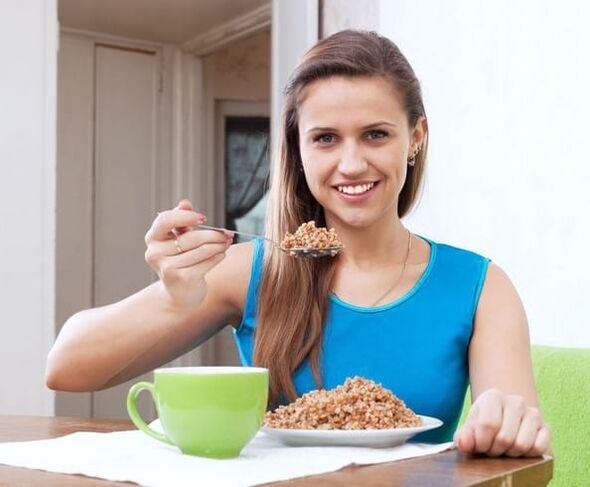
Buckwheat has a unique composition. It contains many useful substances that have a positive effect on human health.
The benefits of buckwheat:
- Complex carbohydrates, starch - quickly saturate the body, give energy and maintain a feeling of satiety for a long time
- Vegetable protein - the "basis" for muscles
- Fatty acids, amino acids - normalize the metabolism in the body
- Fibers - detoxify the body
- Trace elements, minerals, vitamins - they are important for the normal functioning of the body
- Useful acids - improve metabolic processes
Although buckwheat has a fairly high nutritional value (350 kcal / 100 g), it contributes to rapid weight loss.
Slow carbohydrates, which are contained in buckwheat, break down for a long time and do not leave residues that can be deposited in fats.
Correct weight loss with buckwheat is not only rapid weight loss, but also cleansing of the entire organism.
Pros and cons of the buckwheat diet
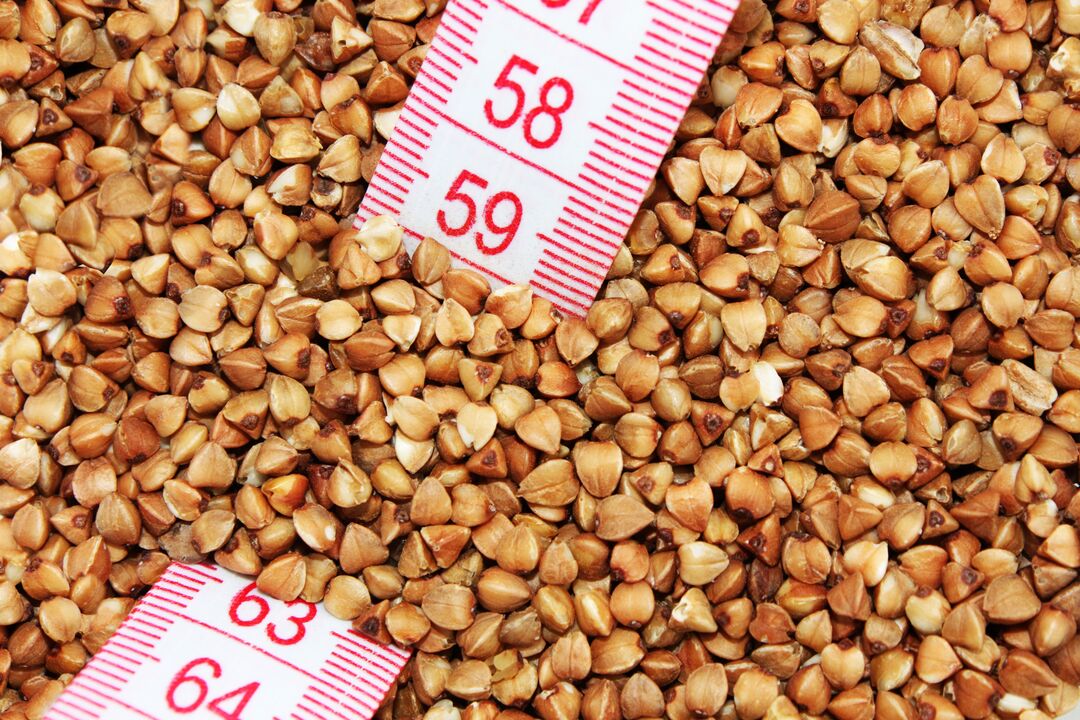
In pursuit of harmony and beauty, women resort to all kinds of diets and procedures. Weight loss with buckwheat is a well-known, fast and effective way to "deal" with excess weight.
Buckwheat diet is great not only because it helps to immediately remove extra pounds, but also has a beneficial effect on the whole body as a whole. Thanks to buckwheat, health is strengthened, the skin is cleansed and rejuvenated.
Benefits of a weight loss diet:
- Improves the immune system
- The vessels are reinforced
- Improves blood circulation
- Better functioning of the liver and organs of the gastrointestinal tract
- Reduces bad cholesterol
- The body gets rid of toxins, toxins and other harmful substances
- The swelling subsides
- Acids disappear
- Improves skin condition
- Resistance to stress increases
Buckwheat diet is also characterized by simplicity and accessibility. You can buy buckwheat in any store, and preparing porridge for a diet is not long and easy.
Thanks to such a diet, it is possible to "burn" 7 kg in a week, without even resorting to physical exercises. The diet is suitable for vegetarians.
Disadvantages of the buckwheat diet:
- Lack of salt and sugar can affect blood pressure.
- Quick adaptation of the body. You are allowed to be on a buckwheat diet for a maximum of two weeks. You can repeat the diet again only after two months.
- The monotony and "bad taste" of the diet requires a lot of willpower.
When switching to a buckwheat diet, the following contraindications should also be taken into account:
- Diabetes
- Gastritis, ulcer, gastrointestinal diseases
- Bright symptoms of menopause
- Depression, neuroses
- kidney failure
- Surgical interventions in the abdomen
- Period of pregnancy and breastfeeding
- Increased acidity of the stomach
- Children and adolescents
How much weight can you lose?

Sitting on a buckwheat diet, every slimmer wonders how much weight you can lose. How much weight you will lose depends on the personal characteristics of the person and his nutrition during the diet.
If, in addition to buckwheat, you include additional products in the menu, the result may be weaker than expected.
The buckwheat diet is a quick mono-diet where you can lose up to 10 extra pounds in 7 days.
Reviews of this diet are generally positive, becausethe scale changes for the better. Sometimes people who lose weight feel a little malaise.
This diet is unlikely to help you lose weight, but losing extra 5-10 kilograms with buckwheat and not starving is a feasible task.
The essence of the buckwheat diet for weight loss
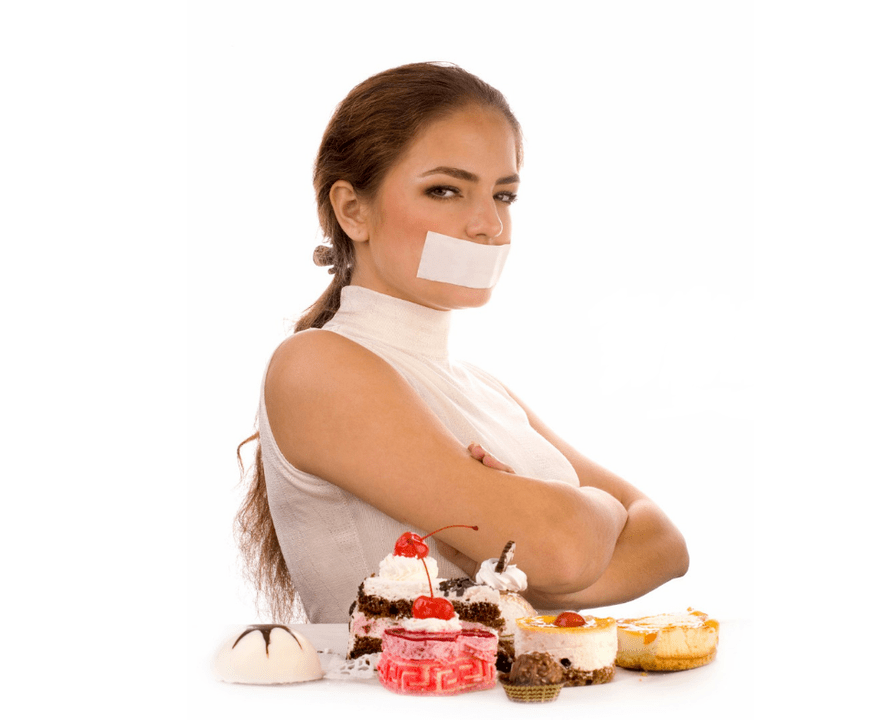
The most important thing in the buckwheat diet is the correct preparation of buckwheat porridge. You don't have to cook it.
How to cook buckwheat?
First, buckwheat should be washed well, then pour boiling water (1. 5 cups of water per 1 cup of cereal). The container with buckwheat should be covered with a towel or blanket and not touched until morning. By breakfast, the porridge will be ready. Do not add sugar, salt or butter.
The number of meals during the day and the amount of porridge eaten are not standardized. You can eat as much and as many times as the body requires. The main thing is not to say that after 7 days of the diet the taste of oatmeal is not "pale".
If the buckwheat porridge is tired and a "crash" may occur, then you can add a little soy sauce or a piece of dried apricots to the porridge. You can afford a little greens or 1 tsp of honey.
During the diet, you should drink plenty of fluids (2 liters of water per day). The last meal should be done 4 hours before going to bed.
The fat burning process begins on the third day of the buckwheat diet. Therefore, the long-awaited results will be noticeable closer to the end of the diet.
Diet menu with buckwheat
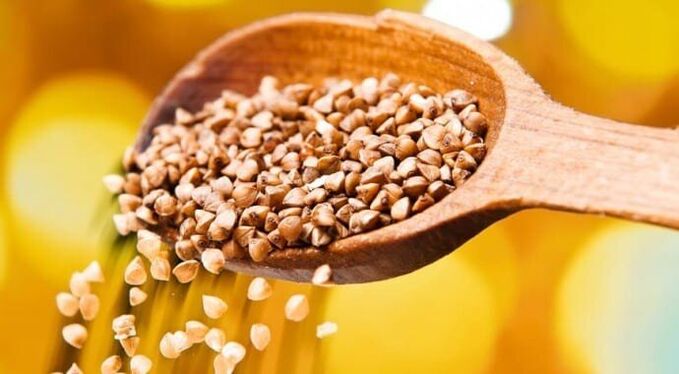
How to sit on a buckwheat diet? The buckwheat diet is quite strict, requiring a lot of endurance.
The main meal for 7 days is buckwheat porridge, a lot of water and green tea without sugar.
Menu for 7 days
In the morning on an empty stomach, drink a glass of warm water with 2 slices of lemon, you can add 1 teaspoon of honey.
- Breakfast: 1st portion of buckwheat porridge. Drink unsweetened tea or fresh vegetable juice without sugar and salt.
- Lunch: 2nd portion of porridge.
- Dinner: 3rd portion of buckwheat.
During the day, you should not forget about the drinking regime (water, unsweetened tea, mineral water without gases). It is recommended to use a vitamin-mineral complex throughout the diet.
What else can you eat
If sticking to a mono-diet (eating only buckwheat) is difficult, then you can add a small amount of other nutritious foods to the menu.
What can you eat besides buckwheat:
- Dried fruits (prunes, raisins, dried apricots - maximum six pieces)
- Onion
- Honey (1 teaspoon per day)
- Natural yogurt without sugar (can be used instead of boiling water when cooking buckwheat porridge)
- Vegetable oil (add to porridge)
Buckwheat diet options
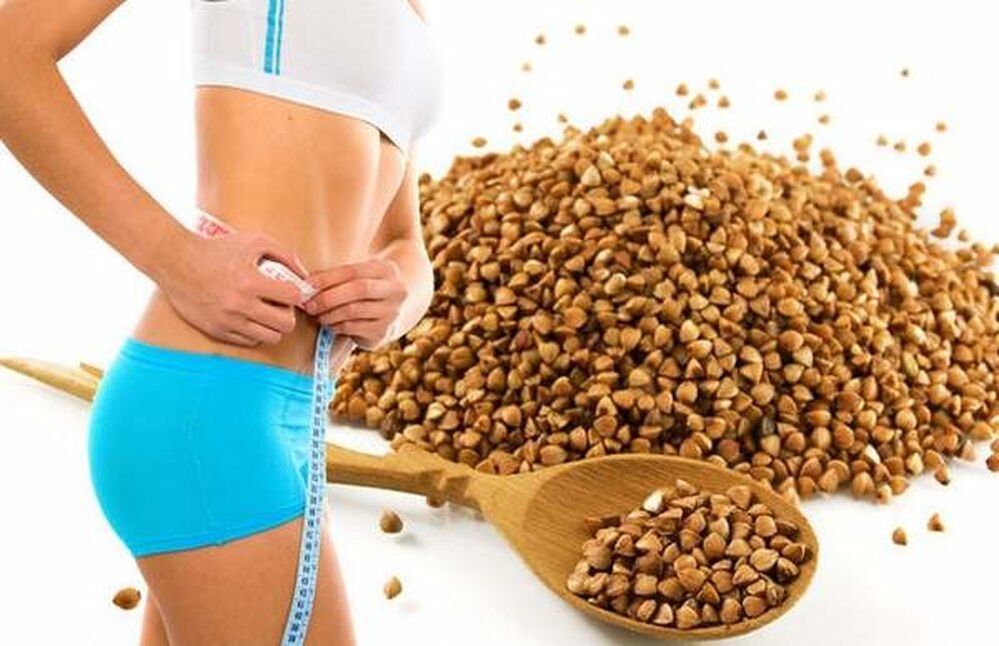
There are also lighter options for the buckwheat diet.
- Kefir-buckwheat diet. Kefir is rich in calcium, proteins and vitamins A and B2. Normalizes digestion, cleanses the body and skin. One liter of kefir should be consumed during the day. It is recommended to drink half an hour before a meal or 30 minutes after a meal.
- Oatmeal buckwheat diet. Oatmeal, like buckwheat, does not require cooking. The grains should only be poured with boiling water and left for a few minutes. During the day, it is allowed to eat as much oatmeal and buckwheat as is necessary to satisfy the feeling of hunger. Kefir, coffee, green tea and rosehip infusion are also allowed.
- rice diet. The diet consists of a daily alternation of buckwheat and rice. On the first day you should eat only buckwheat, and on the next - only rice. And so on. You can also cook half a cup of buckwheat and rice a day and alternate grains throughout the day. It is allowed to drink juice of one lemon, green tea, fat-free kefir and more water.
- Diet with buckwheat and milk. Buckwheat is steamed, then poured with low-fat milk. Another cooking method is to soak washed buckwheat in hot milk. Leave to boil for at least two hours.
- Diet buckwheat soup. Preparation recipe: stew peeled and chopped tomatoes, onions, carrots and place in boiling water. Add buckwheat, cauliflower, pepper and cook everything. This soup is recommended to be eaten throughout the day and drink plenty of water.
Doctor's diet
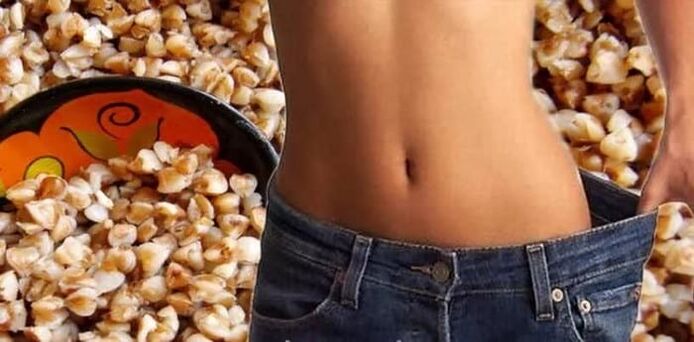
Another alternative to the cleansing diet is the doctor's diet, which the doctor says fights cancer. The essence of the diet is the complete rejection of salt and sugar and the introduction of many vegetables, fruits, nuts and rose hips into the diet.
The main postulates of the diet:
- Vegetables and fruits are eaten raw
- Ban any canned goods
- Compliance with the drinking regime (2 liters of water during the day)
- In the morning and in the afternoon, 30 minutes before meals, you should eat rosehip porridge in powder. To get porridge, you need to grind 100 g of wild rose and pour them with 1 tablespoon. l of powder with lukewarm water, add 1 tsp of honey.
- Buckwheat porridge is in the morning. For a second breakfast - berries
- Lunch - mixed vegetables, steamed fish
- Dinner - 100 g of dried fruits, nuts and herbal tea
The right way out of the buckwheat diet

Proper withdrawal from the diet is the final stage of the diet itself. After seven days of strictly restricted eating, you want to immediately "reward" yourself with delicious and not at all diet meals.
However, this cannot be done. So that the "lost" pounds do not return again and do not harm the body, it is important to exit the buckwheat diet correctly.
Principles of exiting the diet:
- New dishes should be introduced to the menu gradually. You can not overeat. Portions should be increased gradually.
- The body needs 10 days to get used to the new food and the new volumes after the diet. During this time, you should eat in small portions.
- You cannot abruptly refuse buckwheat at the end of the diet. Withdrawal should be gradual within 10 days. Only now buckwheat can be combined with fruits, berries, white meat.
- You can't immediately "pounce" on fried, salty, sweet dishes. It is better to give preference to stews cooked in steam or baked in foil.
- Continue to stick to your drinking regimen. Keep sugary sodas to a minimum.
- Count the calories. The body needs proteins, vegetable fats, complex carbohydrates.
Buckwheat diet for weight loss has many advantages and is quite effective. However, care must be taken not to harm the body due to a strictly restricted diet.




























